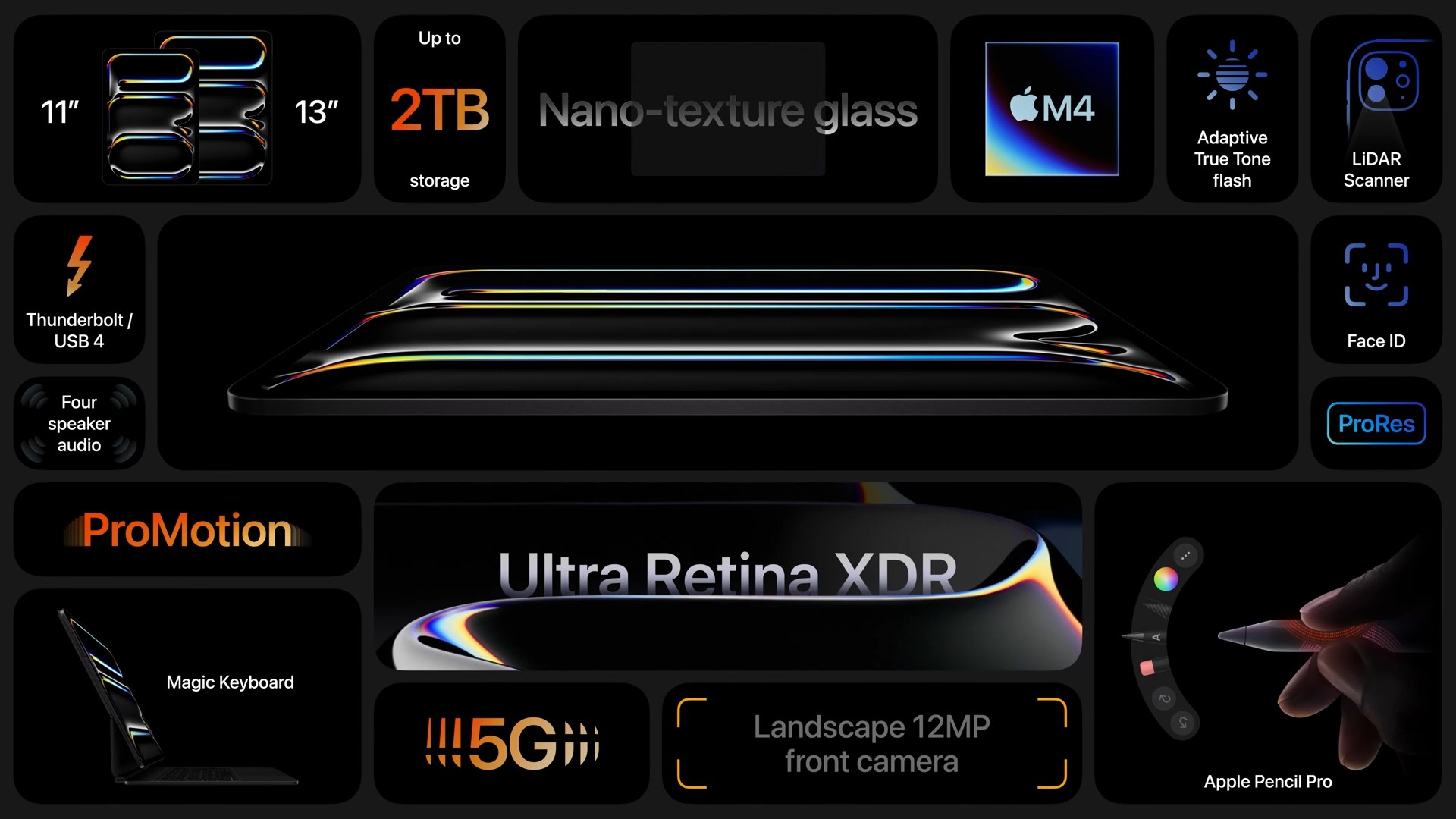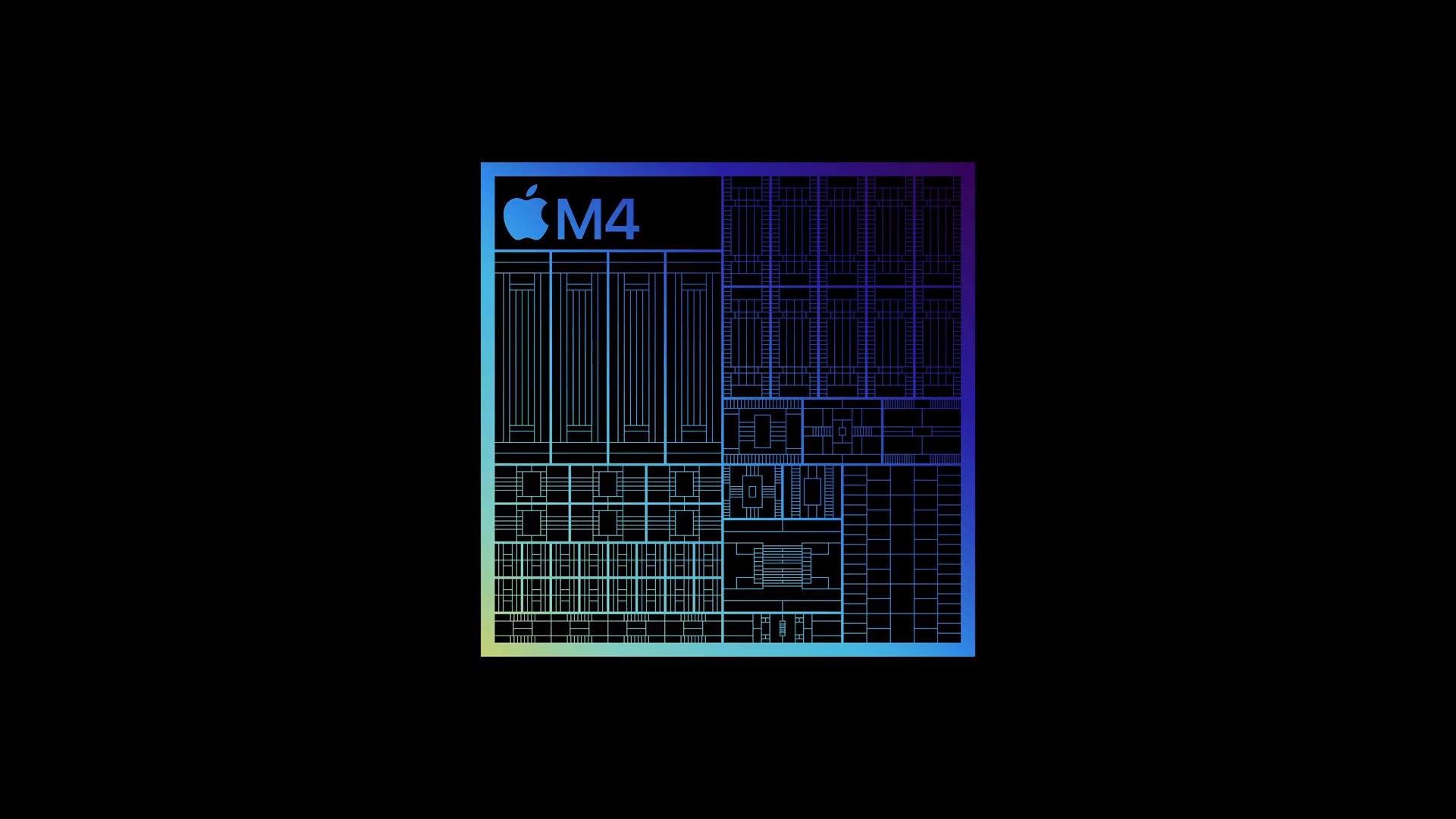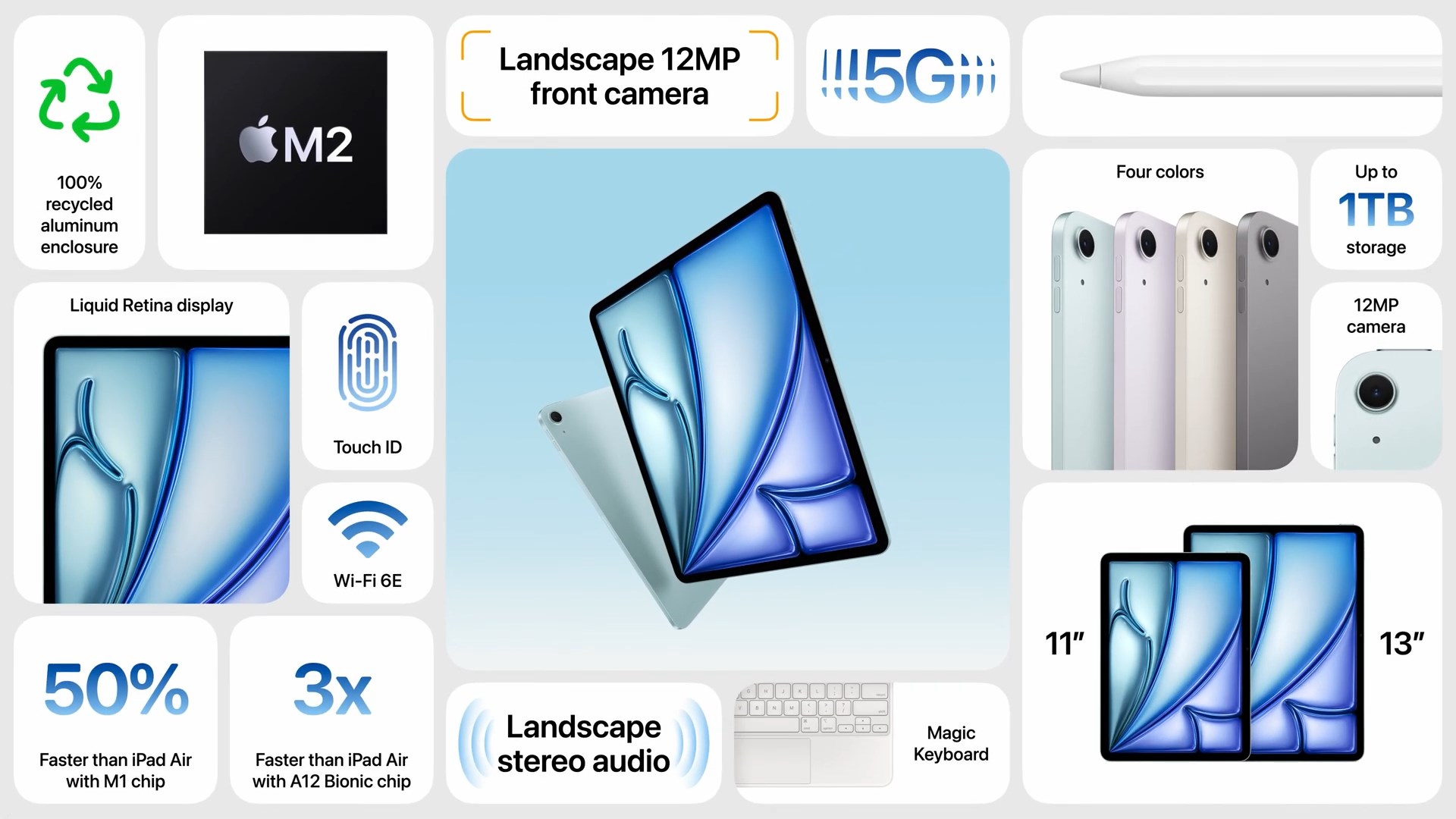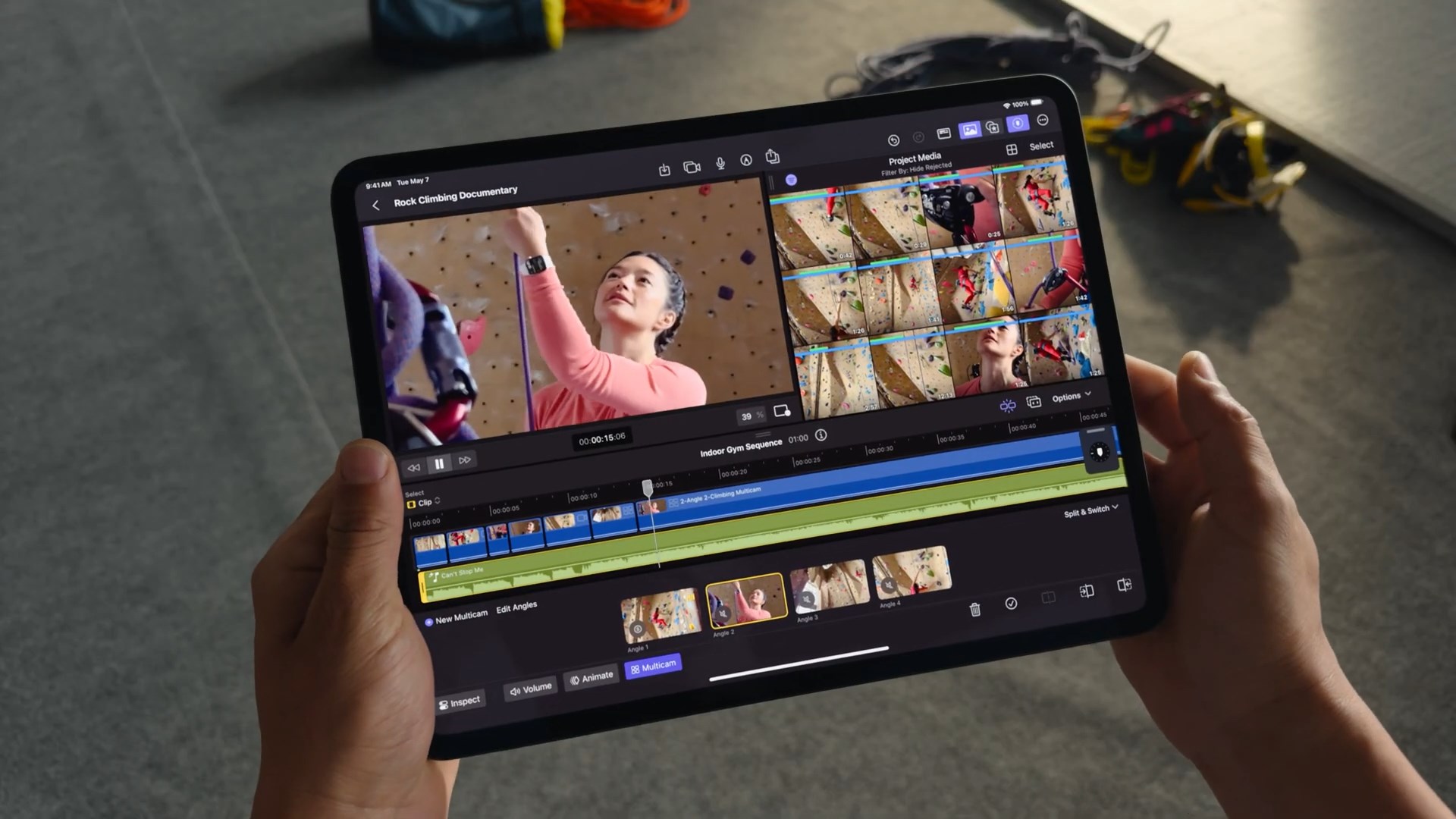
On May 7, Apple hosted its “Let Loose” event, streamed online from Cupertino. This presentation showcased a bunch of new products including a redesigned iPad Pro featuring the new M4 chip, an expanded 13-inch iPad Air, and updates to the Apple Pencil and Magic Keyboard to improve their functionality. The event also highlighted Apple’s continued investment in AI technology, integrating advanced capabilities into the new M4 chip to boost both performance and efficiency.
Table of Contents
Improved Performance with M4 Chip and OLED Display in New iPad Pro
The main focus of the event was on an updated iPad Pro, featuring notable upgrades for both professional and personal use. The introduction of the M4 chip and a switch to an OLED display is central to this new model, promising improved performance and visual experience.
- M4 Chip: This new processor offers faster performance and is designed to handle demanding applications like augmented reality and AI-driven tasks. It’s a step up in power management and processing speed, aimed at users who need robust performance for professional applications.

- Tandem OLED Display: Apple’s move to include Tandem OLED technology in its displays marks an improvement in visual output—providing crisper images and more vibrant colors. This is especially beneficial for users involved in visual arts who depend on accurate color representation. Additionally, the technology is more energy-efficient, helping to extend device battery life, which is crucial for on-the-go usage.

Apple also highlighted the improved compatibility with the Apple Pencil and Magic Keyboard, ensuring that these accessories take full advantage of the new hardware capabilities. This integration results in smoother interactions and more precise input, which is crucial for professionals who rely on their iPad for design work or note-taking.
Overall, the new iPad Pro with its OLED display and M4 chip is designed to offer a more powerful and responsive user experience and is getting closer to a macbook rather than a tablet.
Updates to iPad Air, Apple Pencil, and Magic Keyboard
At the “Let Loose” event Apple also announced updates to the iPad Air and Apple Pencil, and introduced adjustments to the Magic Keyboard, aiming to refine user experience and functionality.
The updated iPad Air is now equipped with the M2 chip, significantly boosting its performance capabilities. This upgrade is particularly beneficial for users who require a powerful device for demanding tasks but prefer the lightweight and portable design of the iPad Air. Also, Air now comes in two sizes – classic 11-inch and all-new 13-inch.
The Apple Pencil has been adjusted with new gesture capabilities and improved pressure sensitivity, making it more intuitive for drawing, sketching, and note-taking. Apple Pencil remains a versatile tool for professionals and creatives who depend on precision and responsiveness.
Additionally, the Magic Keyboard has received improvements to its typing comfort and device interaction. The new keyboard design provides better stability and an optimized user experience, making it ideal for those who use their iPad as a laptop alternative.
Final Cut Camera
Apple also introduced the Final Cut Camera, an innovative feature that integrates directly with Final Cut Pro software on the iPad. This tool allows users to record high-quality video directly into Final Cut Pro, streamlining the editing process. The camera is designed to take advantage of the iPad’s hardware capabilities, supporting advanced video features like real-time effects and color grading. This is a significant development for professionals in video production and content creation, as it simplifies the workflow and enhances the portability of video editing tools.
Wrapping Up
At the “Let Loose” event, Apple introduced a range of updates including the new M4 chip and Tandem OLED display technology, alongside improvements to the iPad Pro, iPad Air, Apple Pencil, and Magic Keyboard. The event underscored Apple’s strategy to integrate advanced technology that supports both professional and personal use, suggesting a continued push towards more capable and energy-efficient devices. Looking ahead, these updates could significantly influence the development of tablet technology – or they might not have a major impact at all. Time will tell.






